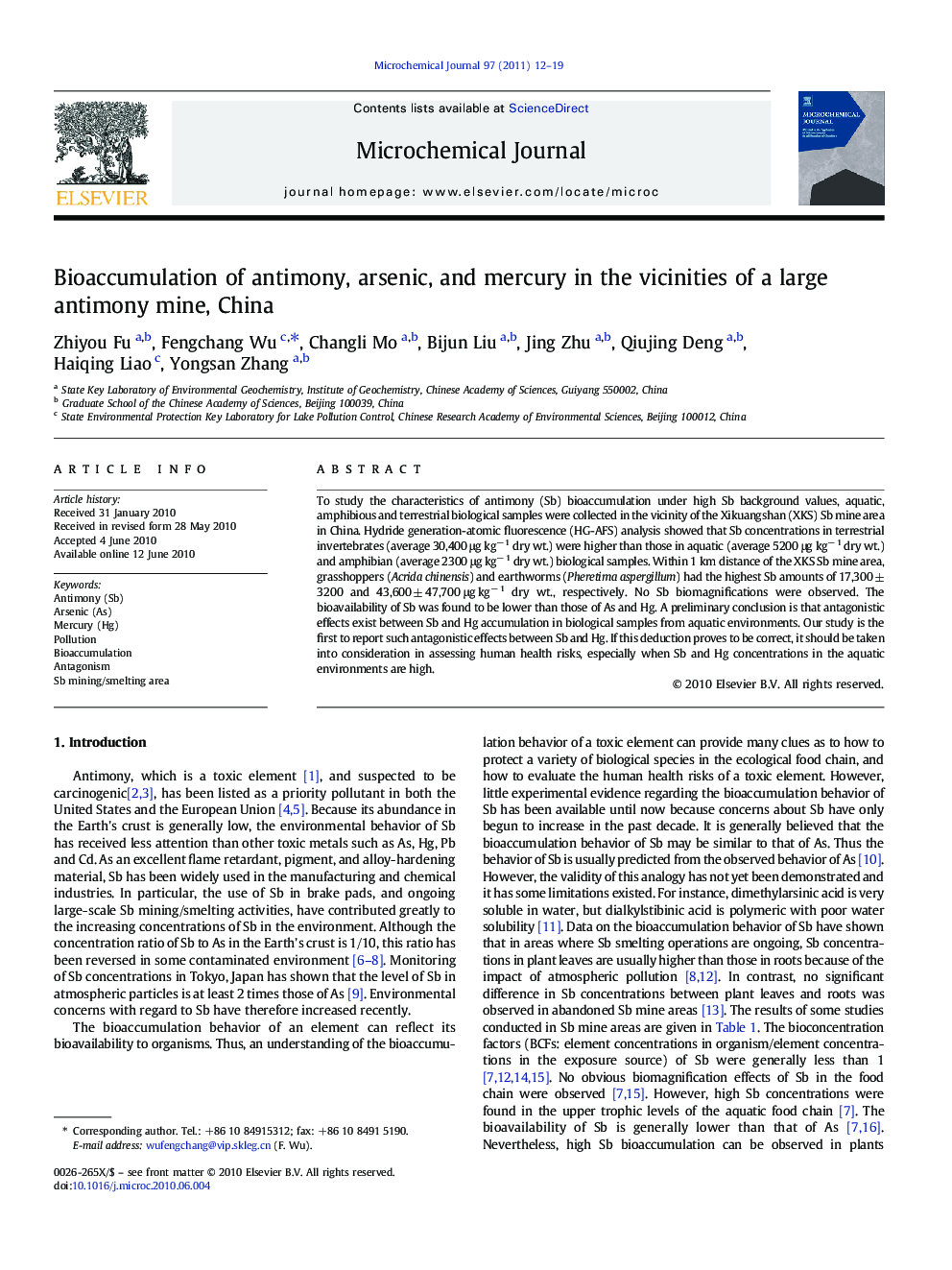| Article ID | Journal | Published Year | Pages | File Type |
|---|---|---|---|---|
| 1228240 | Microchemical Journal | 2011 | 8 Pages |
To study the characteristics of antimony (Sb) bioaccumulation under high Sb background values, aquatic, amphibious and terrestrial biological samples were collected in the vicinity of the Xikuangshan (XKS) Sb mine area in China. Hydride generation-atomic fluorescence (HG-AFS) analysis showed that Sb concentrations in terrestrial invertebrates (average 30,400 μg kg− 1 dry wt.) were higher than those in aquatic (average 5200 μg kg− 1 dry wt.) and amphibian (average 2300 μg kg− 1 dry wt.) biological samples. Within 1 km distance of the XKS Sb mine area, grasshoppers (Acrida chinensis) and earthworms (Pheretima aspergillum) had the highest Sb amounts of 17,300 ±3200 and 43,600 ± 47,700 μg kg− 1 dry wt., respectively. No Sb biomagnifications were observed. The bioavailability of Sb was found to be lower than those of As and Hg. A preliminary conclusion is that antagonistic effects exist between Sb and Hg accumulation in biological samples from aquatic environments. Our study is the first to report such antagonistic effects between Sb and Hg. If this deduction proves to be correct, it should be taken into consideration in assessing human health risks, especially when Sb and Hg concentrations in the aquatic environments are high.
